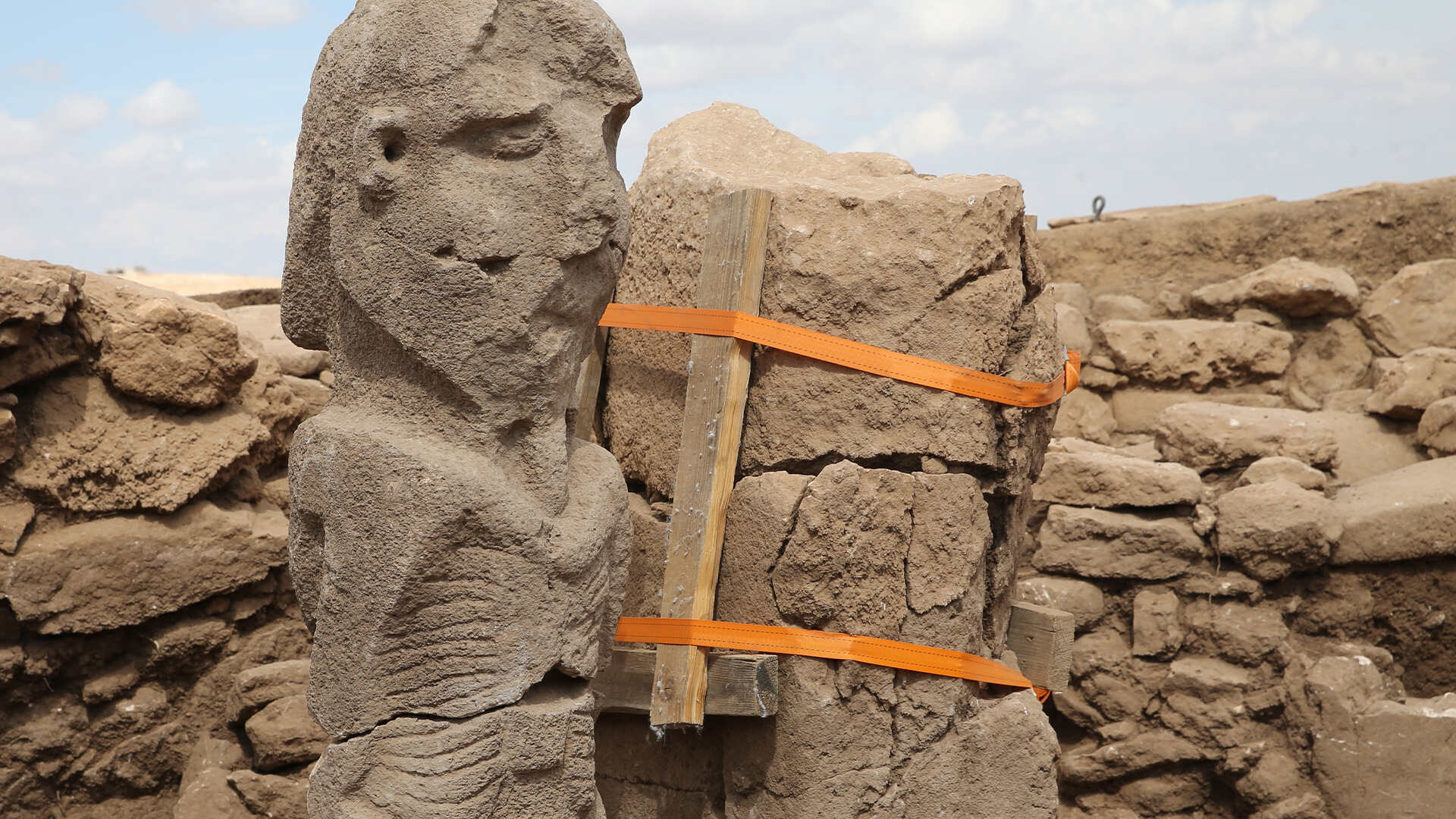
Karahan Tepe, an ancient archaeological site in Turkey, has captured the imagination of historians and enthusiasts alike. One of its most intriguing features is the phallic statue, a symbol shrouded in mystery and rich in cultural significance. But what makes this statue so special? Is it a relic of fertility rituals, a marker of ancient beliefs, or something else entirely? This blog post dives into 34 fascinating facts about the Karahan Tepe phallic statue, shedding light on its origins, purpose, and the secrets it holds. Get ready to journey through time and uncover the layers of history embedded in this enigmatic artifact.
Key Takeaways:
- The phallic statue at Karahan Tepe is over 11,000 years old and may have been used in fertility rituals or as a symbol of male power, shedding light on ancient beliefs and cultural practices.
- The statue's discovery has sparked debates about the role of sexuality and fertility in early human societies, offering valuable insights into the symbolic language of ancient cultures.
What is Karahan Tepe?
Karahan Tepe is an ancient archaeological site in Turkey, often compared to the famous Göbekli Tepe. It dates back to the Neolithic era and offers a glimpse into early human civilization. One of the most intriguing discoveries at Karahan Tepe is the phallic statue.
The Phallic Statue
The phallic statue at Karahan Tepe has sparked curiosity among archaeologists and historians. Here are some fascinating facts about this unique artifact.
- The statue is believed to be over 11,000 years old, making it one of the oldest known sculptures in the world.
- It stands approximately 1.5 meters tall, carved from a single piece of limestone.
- The statue's phallic shape suggests it may have been used in fertility rituals or as a symbol of male power.
- Unlike other statues from the same period, this one has no facial features, focusing solely on its symbolic form.
- The craftsmanship indicates advanced stone-working skills for the time, showcasing early human ingenuity.
- Some researchers believe the statue represents a deity or spiritual figure, possibly linked to ancient fertility gods.
- The statue was discovered in a central location at Karahan Tepe, suggesting its importance to the site's inhabitants.
- Its discovery has led to debates about the role of sexuality and fertility in early human societies.
- The statue's phallic form is unique among Neolithic artifacts, making it a rare and valuable find.
- Some experts think the statue may have been part of a larger ceremonial complex, possibly used for rituals or gatherings.
Significance of the Statue
Understanding the significance of the phallic statue helps us learn more about the culture and beliefs of the people who created it.
- The statue's presence at Karahan Tepe indicates that the site was a place of spiritual or religious importance.
- Its phallic shape suggests that fertility and reproduction were central themes in the community's rituals.
- The statue may have been used to invoke blessings for crops, livestock, or human fertility.
- Its prominent placement at the site hints at a hierarchical society with designated religious leaders or shamans.
- The statue's discovery has provided valuable insights into the symbolic language of early human societies.
- Researchers believe that similar statues may exist at other Neolithic sites, waiting to be uncovered.
- The statue's design reflects a deep understanding of human anatomy and symbolism.
- Its creation likely involved a significant investment of time and resources, indicating its importance to the community.
- The statue's preservation over millennia highlights the durability of limestone as a medium for ancient art.
- Its discovery has sparked renewed interest in the study of Neolithic art and symbolism.
Comparisons to Other Artifacts
Comparing the phallic statue to other artifacts from the same period can provide additional context and insights.
- Unlike the animal carvings at Göbekli Tepe, the phallic statue focuses on human anatomy and symbolism.
- Similar phallic symbols have been found in other ancient cultures, suggesting a widespread fascination with fertility.
- The statue's style is distinct from other Neolithic art, which often features more abstract or geometric designs.
- Its realistic representation of a phallus sets it apart from more stylized depictions in other cultures.
- The statue's size and craftsmanship are comparable to other monumental sculptures from the same era.
- Its discovery has led to comparisons with similar artifacts from Mesopotamia and the Indus Valley.
- The statue's symbolism may have influenced later cultures and their depictions of fertility and sexuality.
- Its presence at Karahan Tepe suggests that the site was part of a broader network of Neolithic cultural exchange.
- The statue's design reflects a blend of artistic and religious influences from neighboring regions.
- Its discovery has prompted new theories about the spread of symbolic art and religious practices in the ancient world.
The Ongoing Mystery
Despite extensive research, many questions about the phallic statue remain unanswered.
- The exact purpose of the statue is still debated among scholars.
- Its creators' identity and cultural background remain a mystery.
- The statue's role in the daily lives of Karahan Tepe's inhabitants is not fully understood.
- Ongoing excavations at Karahan Tepe may reveal more about the statue's context and significance.
Final Thoughts on Karahan Tepe Phallic Statue
Karahan Tepe's phallic statue offers a fascinating glimpse into ancient human culture. This site, older than Stonehenge and the Pyramids, challenges our understanding of early civilizations. The statue's design suggests it had significant cultural or religious importance. Its discovery has sparked debates among archaeologists and historians, pushing us to rethink early human societies' complexity.
The intricate carvings and the site's layout indicate advanced skills and a deep understanding of symbolism. This statue isn't just a relic; it's a testament to human ingenuity and the rich tapestry of our past. As more discoveries emerge, Karahan Tepe will likely continue to reshape our historical narratives.
For those intrigued by ancient mysteries, Karahan Tepe stands as a monumental reminder of our ancestors' creativity and sophistication. Keep an eye on this site; it promises to reveal even more secrets in the future.
Frequently Asked Questions
Was this page helpful?
Our commitment to delivering trustworthy and engaging content is at the heart of what we do. Each fact on our site is contributed by real users like you, bringing a wealth of diverse insights and information. To ensure the highest standards of accuracy and reliability, our dedicated editors meticulously review each submission. This process guarantees that the facts we share are not only fascinating but also credible. Trust in our commitment to quality and authenticity as you explore and learn with us.


